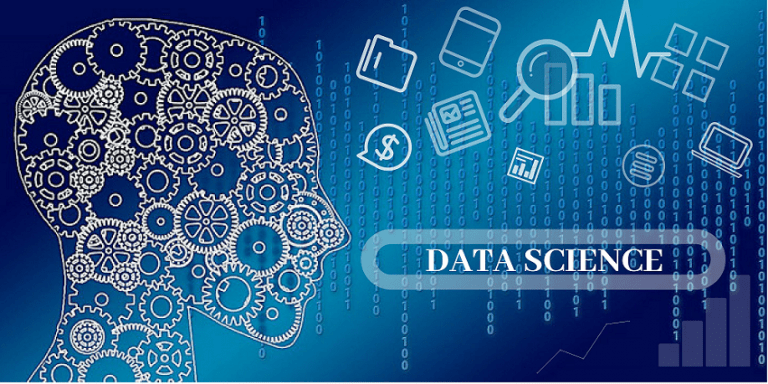Data Science
- All Course
- Data Science
DATA SCIENCE WITH PYTHON
COURSE

An Overview
A data science course provides comprehensive training in the field of data science, which involves extracting actionable insights from large and complex datasets to drive business decisions and solve real-world problems. These courses cover a wide range of topics and techniques, including Basic Python, data analysis, statistics, machine learning, Deep Learning, Artificial Intelligence, and projects etc.
Syllabus
- Selecting rows/observations
- Rounding Number
- Selecting columns/fields
- Merging data
- Data aggregation
- Data munging techniques
- What is Python?
- Why Python?
- Installing Python
- Python IDEs
- Jupyter Notebook Overview
- Data types
- Lists
- Slicing
- IF statements
- Loops
- Dictionaries
- Tuples
- Functions
- Array
- Selection by position & Labels
- Pandas
- Numpy
- Sci-kit Learn
- Mat-plot library
- Reading CSV files
- Saving in Python data
- Loading Python data objects
- Writing data to CSV file
- Selecting rows/observations
- Rounding Number
- Selecting columns/fields
- Merging data
- Data aggregation
- Data munging techniques
Central Tendency
- Mean
- Median
- Mode
- Skewness
- Normal Distribution
Probability Basics
- What does it mean by probability?
- Types of Probability
- ODDS Ratio?
Standard Deviation
- Data deviation & distribution
- Variance
Bias variance Tradeoff
- Under fitting
- Over fitting
Distance metrics
- Euclidean Distance
- Manhattan Distance
Missing Value treatment
- What is NA?
- Correlation
Classification
- Confusion Matrix
- Precision
- Recall
- Specificity
- F1 Score
Regression
- MSE
- RMSE
- MAPE
Linear Regression
- Linear Equation
- Slope
- Intercept
- R square value
Logistic regression
- ODDS ratio
- Probability of success
- Probability of failure Bias Variance Tradeoff
- ROC curve
- Bias Variance Tradeoff
- K-Means
- K-Means ++
- Hierarchical Clustering
- Support Vectors
- Hyperplanes
- 2-D Case
- Linear Hyperplane
- K – Nearest Neighbour
- Naïve Bayes Classifier
- Decision Tree
- Random Forest
Linear Regression
- Perceptron
- Multi-Layer perceptron
- Markov Decision Process
Logistic regression
- Logical Agent & First Order Logic
- AL Applications
- CNN – Convolutional Neural Network
- RNN – Recurrent Neural Network
- ANN – Artificial Neural Network
- Text Pre-processing
- Noise Removal
- Lexicon Normalization
- Lemmatization
- Stemming
- Object Standardization
Classification
- Syntactical Parsing
- Dependency Grammar
- Part of Speech Tagging
- Entity Parsing
- Named Entity Recognition
Regression
- Topic Modelling
- N-Grams
- TF – IDF
- Frequency / Density Features
- Word Embedding’s
- Start Page
- Show Me
- Connecting to Excel Files
- Connect to Microsoft SQL Server
- Connecting to Microsoft Analysis Services
- Creating and Removing Hierarchies
- Bins
- Joining Tables
- Data Blending
- Arameters
- Grouping Example 1
- Grouping Example 2
- Edit Groups
- Set
- Combined Sets
- Creating a First Report
- Data Labels
- Create Folders
- Sorting Data
- Add Totals, Subtotals and Grand Totals to Report
- Area Chart
- Bar Chart
- Box Plot
- Bubble Chart
- Bump Chart
- Bullet Graph
- Circle Views
- Dual Combination Chart
- Dual Lines Chart
- Funnel Chart
- Traditional Funnel Charts
- Gantt Chart
- Grouped Bar or Side by Side Bars Chart
- Heatmap
- Highlight Table
- Histogram
- Histogram
- Cumulative Histogram
- Line Chart
- Lollipop Chart
- Pareto Chart
- Pie Chart
- Scatter Plot
- Stacked Bar Chart
- Text Label
- Tree Map
- Word Cloud
- Waterfall Chart
- Calculated Fields
- Basic Approach to Calculate Rank
- Advanced Approach to Calculate Ra
- Calculating Running Total
- Filters Introduction
- Quick Filters
- Filters on Dimensions
- Conditional Filters
- Top and Bottom Filters
- Filters on Measures
- Context Filters
- Slicing Fliters
- Data Source Filters
- Extract Filters
- Create a Dashboard
- Format Dashboard Layout
- Create a Device Preview of a Dashboard
- Create Filters on Dashboard
- Dashboard Objects
- Create a Story
- Tableau online
- Overview of Tableau
- Publishing Tableau objects and scheduling/subscription.
- List the features of Oracle Database 11g
- Discuss the basic design, theoretical, and physical aspects of a relational database
- Categorize the different types of SQL statements
- Describe the data set used by the course
- Log on to the database using SQL Developer environment
- Save queries to files and use script files in SQL Developer
- Inserting Variables
- Mysql connection
- python database management
- SQL using python SQlite
Projects
- Gun Detection using Python-OpenCV
- Brain Tumor detection
- Disease Prediction Using Machine Learning
- Predicting Stock Price Direction using Support Vector Machines
- Face and Hand Landmarks Detection using Python – Mediapipe, OpenCV
- Wine Quality Prediction – Machine Learningg
- Human Activity Recognition
- Twitter Sentiment Analysis

 Download Syllabus
Download Syllabus